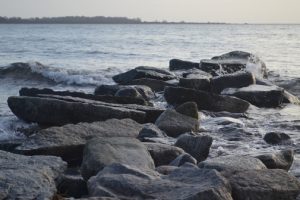
A new study presents evidence that the rise of atmospheric oxygenation did indeed occur 2.4-2.1 billion years ago. It also shows that biological usage of copper became prominent after the so called ‘Great Oxidation Event.’ An international team of researchers has recently published the study in the Proceedings of the National Academy of Sciences.
“Our findings make it possible to reconstruct nutrient content in early marine settings and demonstrate that the iron-rich content of the early oceans must have severely restricted the availability of nutrients important for life”, says Dr Ernest Chi Fru of Stockholm University, who has led the research group.
The study suggests a gradual shift in mainly negative copper isotopic composition of marine carbon-rich sediments, beginning at 2.4 billion years ago (Ga), to permanently positive values after 2.3 Ga. The authors argue that the change reflects the drawn-out nature of the Great Oxidation Event (GOE), when atmospheric oxygen content went from virtually nothing, starting at 2.4 Ga, to peak at near present day levels by 2.3 Ga.
Fundamentally, the high iron content of the early oceans are suggested to have played a critical role in determining trace metal availability, whereby copper levels increased when decreasing marine iron content fell by about 1 000 times after the GOE. The research has been made by examining carbon-rich rocks deposited at the bottom of ancient oceans 2.66-2.1 billion years ago.
“The appearance of oxygen in the atmosphere is one of the most important changes in Earth’s geological history that enabled the evolution of oxygen based life. Understanding the chemistry of the very early oceans and how nutrients were made available, guide our steps towards understanding the processes that govern our own evolution”, says Dr Ernest Chi Fru of Stockholm University.
The study provides a tool for tracking how oxygen levels have fluctuated through Earth’s history and the evolutionary changes that accompanied these fluctuations.
“Our study is highlighting how the isotopic ratios of copper can unlock the evolution of Earth’s early oceans from being oxygen-poor to more like they are today. We now hope to apply this technique to understanding other major geological events in the Earth’s history”, says Professor Dominik Weiss, co-author from Imperial College London.
The article ‘Cu isotopes in marine black shales record the Great Oxidation Event’ was recently published in the Proceedings of the National Academy of Sciences.
Reference:
Cu isotopes in marine black shales record the Great Oxidation Event, PNAS, DOI:10.1073/pnas.1523544113
Note: The above post is reprinted from materials provided by Stockholm University.










